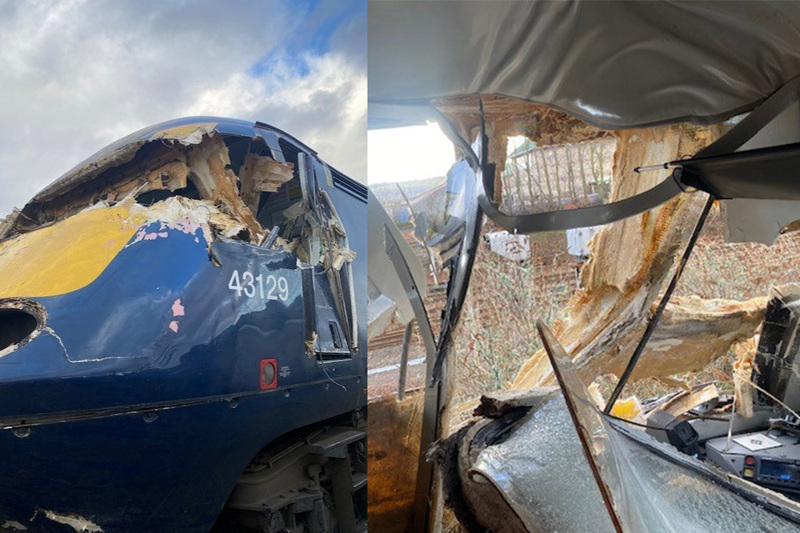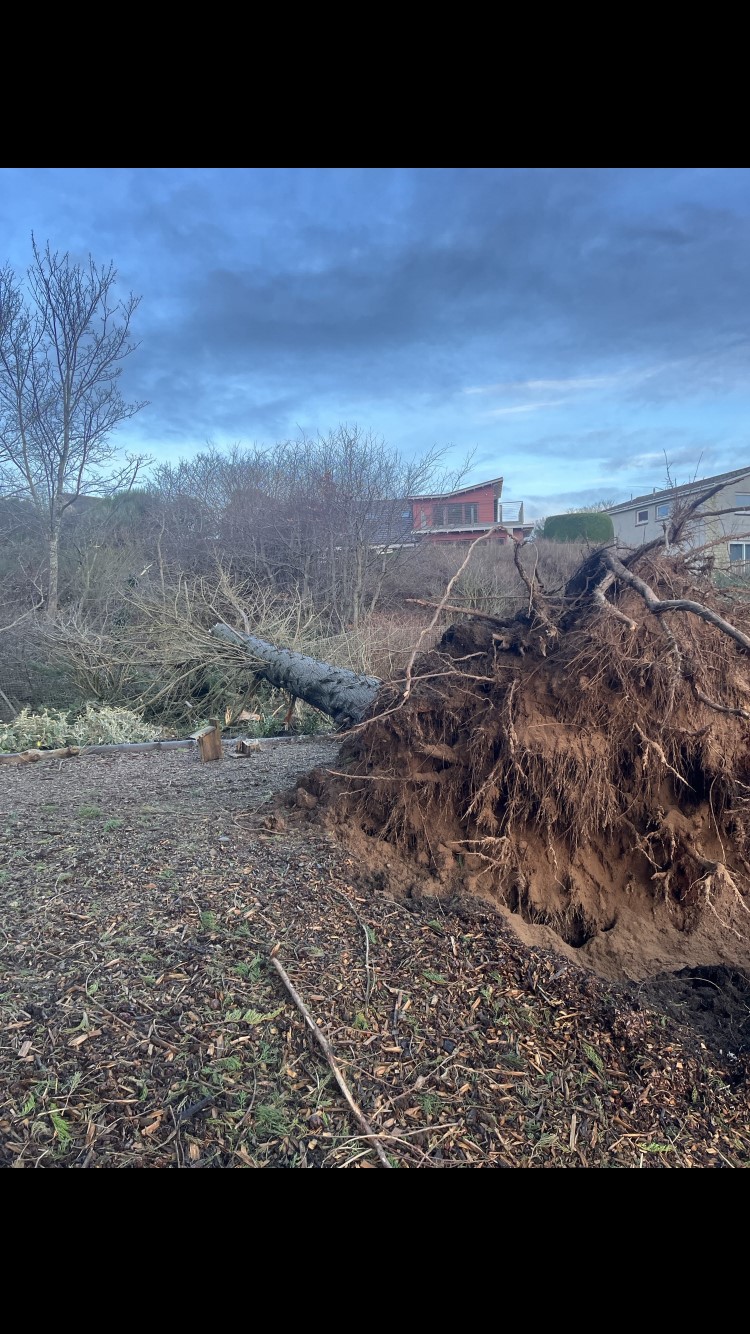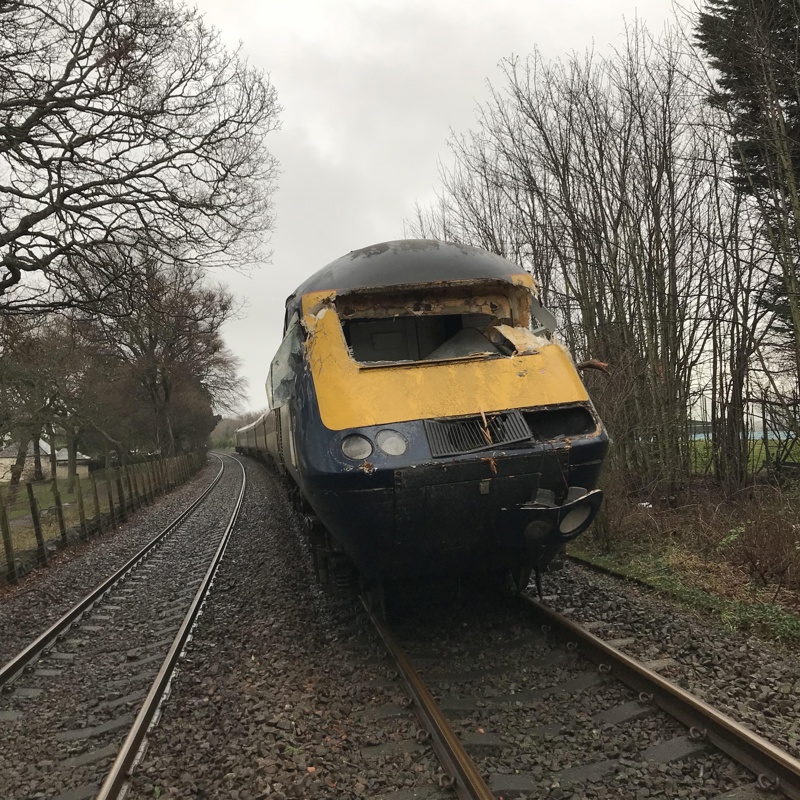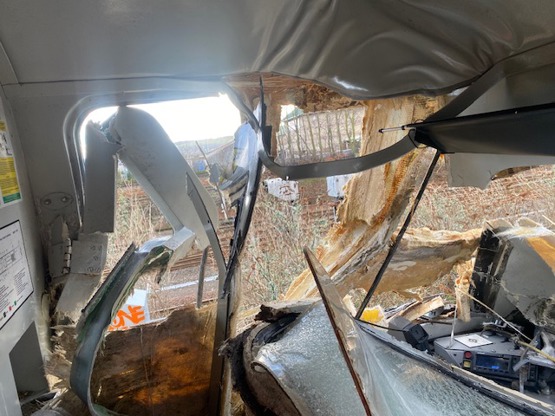
Six calls to warn Network Rail staff of a fallen tree went unanswered at around the time a train crashed into it at 84mph.

Six calls to warn Network Rail staff of a fallen tree went unanswered at around the time a train crashed into it at 84mph.
The Rail Accident Investigation Branch (RAIB) report into the crash at Broughty Ferry, near Dundee, on December 27 2023, has explained how a member of the public rang the Network Rail helpline after seeing the tree had fallen during Storm Gerrit. This call was made around 12 minutes before the 1046 Perth-Aberdeen service, returning south due to floods further north, hit it at 1309.
The call handler tried to contact colleagues at the Scotland integrated control centre (SICC) six times (including twice before the collision and once at around the time of the crash) without success, before getting through at the seventh attempt at around 1318 – nine minutes after the collision.
The impact caused severe damage to the ScotRail HST; the tree trunk smashed through the cab pillars either side of the windscreen and cut into the body of the cab. The driver escaped serious injury by crouching behind their seat after applying the emergency brake.
RAIB found that SICC telephones did not display missed call information, while the helpline call handler “did not have access to a priority telephone number for the SICC, so rang the same number which would be used for non-urgent enquiries”.

The report said: “Calls from the helpline to the SICC would normally be answered by incident support controllers who assist incident controllers in the management of ongoing and out-of-the-ordinary operational incidents. Network Rail stated that calls to the SICC from the helpline rarely relate to safety of the line incidents, and as such they are given a lower priority when SICC staff are busy dealing with ongoing incidents.”
It added they in the hour before the call there had been five line closures in Scotland due to flooding, including the Dundee to Aberdeen line, which had forced the Perth-Aberdeen train to head back south.
“It is probable that the two calls made before the collision had been unanswered due to the incident support controllers giving the helpline call a lower priority while dealing with these flood closures,” RAIB added.
Investigators believe there was sufficient time to prevent the collision if the first call, made nine minutes before the collision, had been answered by sending an emergency call via GSM-R to stop all trains, using SICC radio equipment or advising the Dundee signaller.
“It is possible, but not certain, that there was also sufficient time for this to have also occurred after the second helpline call (made at 1307),” the report added.

RAIB also found that three other trees next to the one that toppled over had been felled before May 2023, leaving it more exposed. The trees in Dundee City Council-owned Barnhill Rock Gardens were also in soil that had “poor mechanical adhesion characteristics which limited the ability of the tree to resist the wind forces acting on it”.
The report said the council did not effectively manage the risk of its trees falling onto railway lines, and recommended the authority review its processes. This includes considering how trees at risk of falling onto railway lines are identified, how factors that could increase the risk of healthy trees falling are understood and account for and maintaining accurate records of tree inspections.
Since the crash Network Rail has provided helpline call handlers with a priority number for route control centres and such calls will be answered as a high priority by a larger pool of staff at the control centre. A review into the SICC phone system is also under way.

RAIB has also recommended Network Rail, as part of its development of aerial surveying technology to inspect lineside trees, considers how it could assist detecting altered exposure, including trees on third-party land, which could present a risk if they fell.
Responding to the report, a Dundee City Council spokesperson said: "The city council has received the report, and officers are looking in detail at the recommendations that have been made by the Rail Accident Investigation Branch.
"We continue to work with Network Rail to ensure effective control of the risk of trees falling onto the railway."
Login to continue reading
Or register with RAIL to keep up-to-date with the latest news, insight and opinion.


















Login to comment
Comments
No comments have been made yet.